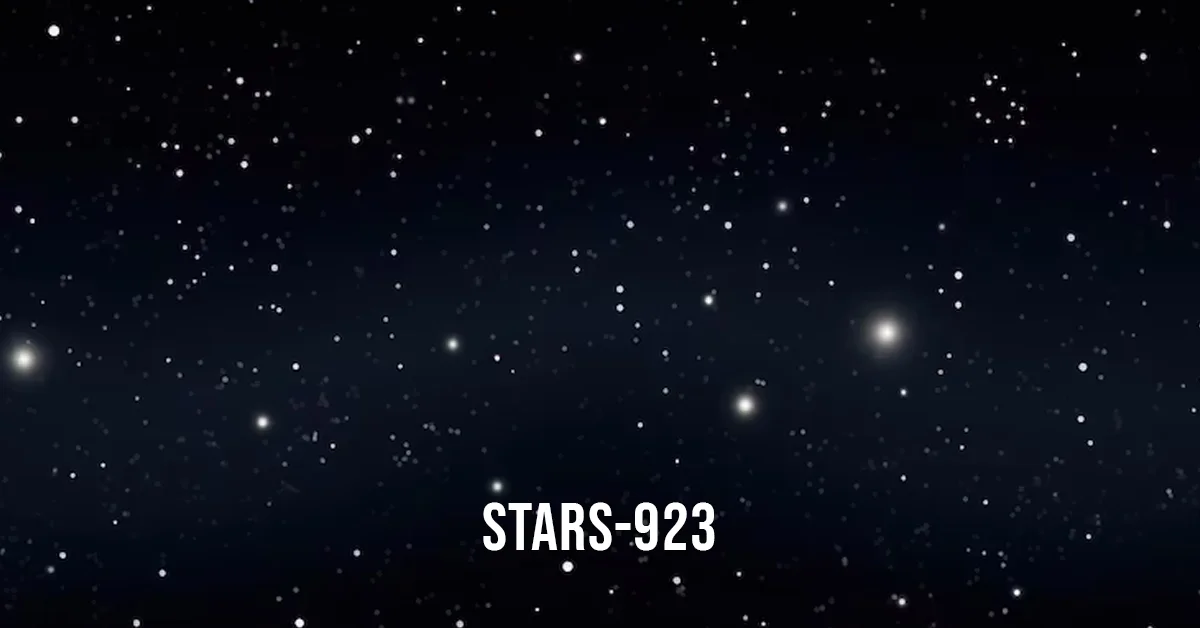The universe is a grand tapestry woven from the fabric of countless stars, each with its own story to tell. Among these celestial bodies, one star stands out: Stars-923. This enigmatic star has captured the imagination of astronomers and stargazers alike. In this article, we will delve into the ultimate cosmic secrets of Stars-923, exploring its characteristics, significance, and the mysteries that still surround it.
ALSO READ: Ultimate Guide To Forceps: Types, Uses, And Benefits
Table of Contents
ToggleWhat Is Stars-923?
Stars-923 is a unique star located approximately 500 light-years away from Earth in the constellation of Centaurus. It is classified as a G-type main-sequence star, similar to our Sun. However, Stars-923 exhibits some peculiar features that make it a focal point for scientific research.
Characteristics of Stars-923
Spectral Classification
Stars-923 belongs to the G-class of stars, which means it has a surface temperature between 5,300 and 6,000 degrees Celsius. This temperature allows it to produce a significant amount of visible light and radiation, contributing to its brightness.
Mass and Size
With a mass about 1.2 times that of the Sun, Stars-923 is slightly more massive than our own star. Its size is also larger, leading to a luminosity approximately 1.5 times greater than that of the Sun. This makes it an intriguing subject for studying stellar evolution.
Age and Lifecycle
Estimates suggest that Stars-923 is around 6 billion years old, placing it in the middle of its lifecycle. This stage is crucial for understanding how stars evolve over time and how they will eventually end their lives.
The Importance Of Stars-923 In Astronomy
Stars-923 is more than just a beautiful point of light in the night sky; it holds significant implications for the field of astronomy.
Studying Stellar Formation and Evolution
Understanding the lifecycle of Stars-923 allows astronomers to gain insights into stellar formation and evolution. By comparing it with other stars of different ages, scientists can create models that explain how stars develop over time.
Exoplanet Research
Stars-923 is particularly interesting due to its potential for hosting exoplanets. As astronomers study its characteristics, they also search for planets in its habitable zone, which could offer clues about the possibility of life beyond Earth.
Cosmic Distance Ladder
As a benchmark star, Stars-923 plays a crucial role in the cosmic distance ladder. By studying its brightness and distance, astronomers can refine their measurements of other celestial objects, improving our understanding of the universe’s structure.
The Mysteries Surrounding Stars-923
Despite the advancements in our understanding of Stars-923, several mysteries remain unsolved.
Unexplained Variability
Astronomers have noted some variability in the brightness of Stars-923. This fluctuation is not typical for G-type stars and has prompted research into its potential causes, which may include stellar flares or the presence of orbiting planets.
Chemical Composition
The chemical makeup of Stars-923 presents puzzles for scientists. While it has a similar composition to the Sun, there are discrepancies in certain elements. Understanding these differences can lead to new insights into the processes of stellar formation.
Magnetic Field Dynamics
The magnetic field of Stars-923 is another area of active research. Its behavior is not fully understood, and studying it could provide valuable information about the magnetic properties of other stars in the universe.
Observing Stars-923: Techniques And Tools
To unlock the secrets of Stars-923, astronomers employ a variety of techniques and tools.
Spectroscopy
Spectroscopy allows scientists to analyze the light emitted by Stars-923. By studying its spectrum, researchers can determine its temperature, chemical composition, and even the presence of exoplanets.
Photometry
This technique involves measuring the brightness of Stars-923 over time. By observing its light curves, astronomers can identify patterns that may indicate the presence of orbiting bodies or other phenomena.
Space Telescopes
Space telescopes, such as the Hubble Space Telescope and the upcoming James Webb Space Telescope, are crucial for studying Stars-923. They can observe the star without the interference of Earth’s atmosphere, providing clearer and more detailed data.
The Future Of Research On Stars-923
As technology advances, the study of Stars-923 is expected to deepen. Future missions and improvements in observational techniques will likely yield new discoveries about this intriguing star.
Next-Generation Telescopes
Upcoming projects, like the Extremely Large Telescope (ELT) and the Thirty Meter Telescope (TMT), will enhance our ability to observe Stars-923. These telescopes will provide unprecedented resolution and sensitivity, allowing astronomers to explore its characteristics in more detail.
Interstellar Missions
While currently in the theoretical stage, interstellar missions could one day allow us to send probes to explore stars like Stars-923 up close. Such missions could revolutionize our understanding of stellar environments and their potential for hosting life.
Collaborative Research Efforts
International collaborations among astronomers will continue to play a crucial role in the study of Stars-923. Sharing data and resources will help expedite discoveries and lead to a more comprehensive understanding of this star and its surroundings.
Conclusion
Stars-923 serves as a window into the mysteries of the cosmos, offering valuable insights into stellar formation, evolution, and the potential for life beyond our solar system. While we have made significant strides in understanding this fascinating star, many questions remain unanswered. As technology advances and research continues, we are poised to unlock even more cosmic secrets that Stars-923 holds.
ALSO READ: Before Its News: Your Essential Guide To Alternative Media
FAQs
What is Stars-923?
Stars-923 is a G-type main-sequence star located about 500 light-years from Earth in the Centaurus constellation, notable for its brightness and potential for hosting exoplanets.
How does Stars-923 compare to our Sun?
Stars-923 is slightly more massive and larger than the Sun, with a luminosity approximately 1.5 times greater, and is around 6 billion years old.
Why is Stars-923 important for exoplanet research?
Due to its characteristics, Stars-923 is a candidate for hosting exoplanets in its habitable zone, which could provide insights into the conditions necessary for life.
What techniques are used to study Stars-923?
Astronomers use spectroscopy to analyze its light spectrum, photometry to measure its brightness over time, and space telescopes for clearer observations.
What are the future research prospects for Stars-923?
Future advancements in telescope technology and potential interstellar missions may provide deeper insights into Stars-923 and its surroundings, leading to new discoveries in stellar and planetary science.

